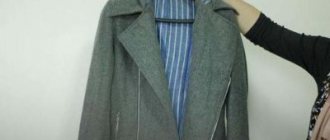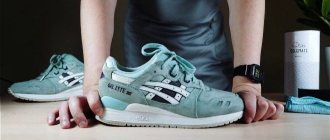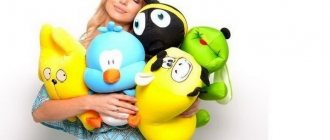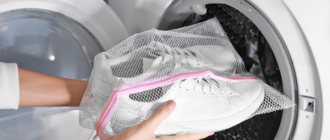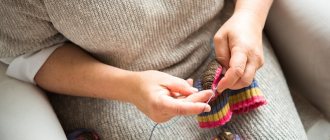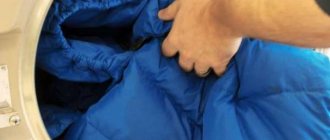What is this text about? In this text we will answer the following questions: how to wash a musical soft toy how to wash musical soft toys how to wash soft toys with music How to properly wash soft toys at home: by hand or in a machine?
Soft toys are faithful companions for children. But not only children love them. Even adults often become passionate and collect teddy bears, dogs... They are soft and cuddly. Their presence in the house creates a relaxing atmosphere. But... It's not just about game items. They are also collectors of dust and other pests, particularly mites. Therefore, you need to know how to wash soft toys in a washing machine and by hand. They must be cleaned according to contamination or once every 3 months.
Wet cleaning
For such cleaning, you can use foam (it is better to take from baby soap - it will be safer for children).
It is necessary to lather a sponge or rag with soap, and then squeeze it out well.
Use the resulting semi-dry cloth to wipe the felt toy, paying special attention to heavily soiled areas. Afterwards, clean with a slightly damp cloth (washed from foam)
Next, all that remains is to dry the soft toy on the balcony or windowsill.
Fill a small container with water, add baby bathing product (shampoo or bubble bath), and whisk until a thick foam forms. “Scoop up” the foam with a sponge and rub the soft toy well (do not let it get completely wet). Wipe off any remaining foam with a semi-dry rag, and then blot additionally with a cotton towel (you can use a terry towel).
Apply this type of cleaning to felt toys, proceeding as follows:
- Take a clean rag.
- Moisten it with water and squeeze it out.
- Lather with baby soap.
- Rub it onto contaminated areas.
- Remove applied soap with a clean, damp cloth.
- Place the toy on the balcony until it is completely dry.
Important! The wet cleaning method is also suitable for plush products filled with anti-stress balls. Wet cleaning of soft toys is suitable for products with small parts and built-in mechanisms:
Wet cleaning of soft toys is suitable for products with small parts and built-in mechanisms:
- Pour water into the basin.
- Pour a small amount of shampoo into it.
- Lather the water and use a sponge to scoop up the foam.
- Wipe the toy with it.
- Remove applied foam with a damp towel.
- Blot excess water with a terry towel.
- Place it to dry on a cloth or on the balcony.
Recommendations
The following tips will help make washing toys by hand easier:
- All manipulations must be carried out using rubber gloves.
- If there is some kind of electronic unit inserted inside the toy (for music, lighting, etc.), it must be removed before washing.
- Cleaning must be done very carefully, especially around small parts (eyes, nose) and those that are glued rather than sewn.
- Before washing, make sure that all seams are well stitched and small parts on the material are carefully secured.
- Toys that need washing should not be stored together with new and clean ones.
If a toy, even after careful treatment, becomes stained and fades heavily, this indicates its low quality and the use of questionable materials and dyes. There’s definitely no point in regretting something like this.
Video “Cleaning soft toys”
Method No. 1
If the bear is large, then it can be washed by hand by placing it in the bathtub.
Fill the bath with warm water and dissolve baby washing powder. Then the bear is placed in the liquid, waited until it is completely wet, and then lathered additionally. If there are severe stains, then additionally remove them by rubbing with a brush. Wash the toy for about 20 minutes. At the end, rinse at least 4 times.
A bear washed using this method cannot be wrung out. Therefore, you will have to leave it in the bathroom for a couple of hours until the water has completely drained. Then take it to a warm, well-ventilated room. If possible, then it is permissible to go outside in direct sunlight.
While drying, the product must be shaken periodically to prevent lumps from appearing.
Method No. 3
Wet cleaning:
- add baby shampoo to a small container with warm water, beat until thick foam appears;
- take a soft clothes brush, apply foam to the product and rub gently;
- then wipe the soapy area with a microfiber cloth, soaked and wrung out in water, until all the soap disappears;
- This is how the entire product is washed.
Some toys cannot be washed, such as those made of felt or felt, with musical elements sewn into the paws and head. Don’t rush to get upset, because you can do without washing. There are several ways to solve the problem.
Those toys that are strictly not recommended to be washed can be cleaned using 3 methods:
- dry method;
- damp, but without thorough washing;
- remove dirt by freezing - mainly suitable for small items.
Cleaning large soft toys at home is carried out as follows:
- Take the blade.
- Spread the product at the seams.
- Remove the filler from it.
- Wash only one fabric in baby powder.
- Dry it and fill it with filler.
- Sew carefully along the seams.
Important! You can also use dry processing or wet processing, but without washing, if this is convenient for you to do with the item
If there is a music block
Surely, among the collection of soft animals there will be those that tell your child fairy tales or sing funny songs. Such a toy often becomes the most favorite, because you can talk to it, inventing new stories. This means she will need cleaning more often. But how to carry it out so that the toy does not shut down forever when water gets into the electronic device?
The musical block in many soft toys is made in the form of a small rectangular box and sewn or inserted into a pocket with Velcro
If there is very little dirt, you can easily deal with it manually. Dissolve the detergent in water (about 1 tablespoon per 1 cup or according to the instructions on the label), apply a little solution to a soft brush or sponge and wipe the product from top to bottom, removing dirt. Then change the soap solution to clean water and repeat the treatment.
More serious contamination will require more work.
- Feel the toy, find the place where the electronics are located. Open the seam closest to the device.
- Carefully remove the box containing the electronic device.
Just in case, at the same time check whether the battery can be replaced and whether this is necessary. If yes, then it is better to replace it at this stage.
- Mend the seam and wash the toy. Depending on the characteristics of the product, you can do this in an automatic washing machine or manually.
- Dry the toy thoroughly, then open the seam again. Replace the electronics box. Select threads of a suitable color and carefully mend the seam.
If you do everything right, the toy will still entertain your child as if it were new.
Oh, here, when my grandmother washed the laughing Smesharik Krosh, after that he could neigh in the middle of the night for no apparent reason! It was quite scary in the complete silence!
Alena Ivanchenko (Kuts)
https://deti.mail.ru/forum/obsuzhdaem_tovary_dlja_detej/igrushki/kak_stirat_govorjashhie_igrushki/
How not to spoil something
You can clean any toys at home. In order for toys to retain their shape after a hygiene procedure, you need to choose the right washing method. Typically, the product label will indicate whether it is machine washable. If the toy is stuffed with materials of different textures (for example, padding polyester and silicone granules), it is recommended to wash it by hand.
If not washable, use dry cleaning methods
It is necessary to clean toys that have glued decorative parts, such as eyes, mouth and nose, using a wet method without immersion in water.
In addition, you need to take into account the presence of plastic parts. Before washing, it is better to rip or cut them off and sew them back after the procedure. This will help maintain the appearance of the product. But if for some reason this cannot be done, before putting the pillow in the washing machine, place it in a washing net or pillowcase to avoid scratches and abrasions on the plastic elements.
Is it possible to wash a musical toy?
Washing soft toys with a musical mechanism is possible only when the musical unit is located in one place of the product and is like a large rectangular or round box with a button lid and a built-in speaker.
Before washing, be sure to remove the musical mechanism
The mechanism must first be removed from such a toy. In most cases, it is located in the belly or back of the toy.
But you cannot wash the toy in this form; first it must be sewn up. This can be done with large stitches; the aesthetic side does not matter in this case. Now the toy can be washed in a machine or by hand. After the procedure, install the mechanism back and sew it up, but with neat small stitches.
Sometimes it is not possible to remove the device. In this situation, the toy is cleaned using dry methods.
How to do it right?
If your baby plays with soft toys constantly, they need to be cleaned or washed 1-2 times a month, depending on the intensity of use. If the little one rarely communicates with his plush friends, they need washing no more than 4-5 times a year.
To choose the right method for washing (cleaning) a soft toy, carefully study its characteristics.
- Size . This is especially true for large toys. They are unlikely to fit in the washing machine, and drying them will be very problematic. Therefore, in such cases, they rarely do without dry cleaning, or choose dry cleaning.
- Availability of additional parts . You should also pay attention to their fastening. We are talking about eyes, noses, mouths, bows, collars, etc. It would be advisable to remove, cut or tear off some of them before washing (depending on how they are attached to the toy) to preserve their appearance. And then, after washing, attach it back.
- Filler . Soft toys are usually filled with padding polyester, foam rubber, cotton wool, sawdust, down, etc. Different materials react differently to moisture and temperature. This should be taken into account when choosing a washing (cleaning) method.
- Electronic mechanism . It is located inside toys that make some sounds or reproduce some movements. And before washing a drummer bunny, for example, or a Masha doll that can cry, it must be removed without fail.
- External material . Soft toys can be fur, plush, knitted, or rag. And some materials may well lose their original appearance when washed. They shed, shrink, or, conversely, stretch, losing their former shape and presentation. But nothing like that will happen to them if you wash them correctly.
Handwash
By hand, you can wash toys that either due to their size will not fit into the washing machine, or their filling is not advisable to be heavily moistened, or the outer material cannot be machine washed, or they contain an electronic mechanism that cannot be removed from them during washing. .
- First, thoroughly vacuum your little one’s favorite bears, bunnies and pigs.
- Additional parts do not need to be removed when hand washing.
- You will need a container of water, a soft sponge and baby shampoo (or another, necessarily hypoallergenic, detergent).
- Lather the shampoo in water until a thick foam forms.
- Then scoop up the foam with a sponge and apply it to the surface of the toy.
- After this, rinse off the foam with a damp washcloth (you can use a microfiber cloth - it absorbs moisture well). Try not to wet the filler.
- To ensure that your baby’s plush friends are soft to the touch after washing, they can be sprayed with fabric softener, previously diluted with water, from a spray bottle.
- Dry toys with a hairdryer. In this case, it is better to comb fur with a brush.
- After washing, they must be taken out into fresh air for several hours. It will be useful for them to bask in the sun in summer and to lie in the cold in winter.
Machine washable
You can machine wash toys filled with foam rubber or synthetic padding. In this case, you should not be afraid that the filler will not dry out. Manufacturers usually attach labels to them indicating whether machine washing is contraindicated for them.
- It is better to remove electronic mechanisms and additional parts from toys before washing them in the machine.
- Place your baby's soft, fluffy friends first in a laundry bag for delicate items, then in the drum of the washing machine.
- Add baby laundry detergent and fabric softener to the detergent container.
- Set the stripping temperature to 30°C.
- Select the most gentle program, preferably without spinning.
- If you want to wash a large toy, or one that is heavily soiled, you can take it apart. Or remove the filling from it and wash it separately in a bag, and the outer material separately. After drying, you can then simply put everything back together as it was.
How to dry?
It is better to dry soft toys in the fresh air. Knitted ones must be laid out on a dry towel. Under no circumstances should they be hung. The rest dry quite normally in a suspended state.
If it is not possible to take the toys outside to dry, place them in front of the radiator or on the windowsill.
Musical toys - what to do with them?
If electronic components and other mechanisms from a toy can be easily removed or removed, why not do this? Then you can safely wash it in a washing machine.
Most often, devices that make sounds are located in special pockets sewn on the back or stomach of dolls and cute animals. They are quite easy to remove from there and put back in place after washing.
But some manufacturers hide electronics inside soft toys. Then you just have to feel the filler with your fingers, find the location of the mechanism, rip the seam on the outer material, take out the mechanism and, of course, sweep the seam again. After washing, rip the seam open again, insert the mechanism and sew it up thoroughly.
In the event that it is not possible to separate the electronics from the toy, it can be washed by hand. Or get by with dry cleaning.
Water cleaning of large toys
If your child’s soft toy competes with him in size, then, of course, it will be quite difficult for you to wash it on your own. Then you can’t do without dry cleaning. The main thing is to deliver this large item there. And there the specialists will cope with it without any problems.
Laundries use two types of dry cleaning: dry and wet. Dry cleaning uses vapors of chemical solvents that are unlikely to be beneficial to a child’s body.
Therefore, if you have to resort to this kind of service, then you should choose water cleaning or water treatment. It is produced with special detergents, without harmful solvents. And to completely remove them, things should be rinsed thoroughly and repeatedly.
Cleaning
Dry cleaning is carried out if it is necessary to tidy up a musical toy. This method is also good if it is bulky and does not fit into the drum of an automatic washing machine, or if it is winter outside and it will not be possible to dry it well.
How to clean a soft toy that cannot be washed?
To do this, use dry dust removal methods rather than detergent. For example, soda, starch, vacuum cleaner or freezing.
Soda
Soda cleans all the lint well. This is a cheap product that can effectively remove dust mites.
Baking soda not only cleans items that cannot be washed, it deodorizes them. That is, if they begin to smell unpleasant, use this food product. This natural remedy will not cause an allergic reaction in the child, unlike deodorants containing parabens and aluminum.
How to clean with soda:
Take a plastic bag of the appropriate size. Place the product prepared for cleaning into it. It should dangle freely in it. Pour a glass of soda into it for 1 product. Tie the bag tightly, grab the ends from different edges with your hands and shake it well
It is important that the soda penetrates the entire pile. Shake hard, don’t be afraid - this will not damage the material and the filling; on the contrary, the filling will straighten out a little (you can put tennis balls inside for this). Place the bag aside
Lay a sheet on the floor and then take everything out of the bag onto it. Take a soft brush that will not pull out the lint and clean the product.
Cleaning soft toys at home using this method is very effective. All the dirt will come out along with the soda. The previously white product will turn grey, which means the pile has been thoroughly cleaned.
Starch
Large items can also be treated with starch. Use corn or potato, both products do the job perfectly.
Cleaning is done manually from the outside. Unfortunately, the inside of the product is not cleaned.
Algorithm of actions:
- pour ½ cup of starch into the bag;
- cover tightly with electrical tape or tape;
- Shake vigorously for 5–10 minutes;
- open the package, shake off the soda;
- clean with a brush.
After this, it is recommended to ventilate the product on the balcony for several hours.
Vacuum cleaner
Another dry cleaning method is to use a regular vacuum cleaner. This method is the simplest and easiest, because after it there are no grains of dust left that still need to be removed along with the product used.
How to clean soft toys at home:
- Plug in the vacuum cleaner. Remove the attachment used for carpets and put on the one designed for cleaning upholstered furniture.
- Bring it close to the pile and press the “Start” button. Decide on the mode yourself, depending on the power of the vacuum cleaner itself. If it is old and does not collect debris well even from the carpet, you can set it to the maximum setting.
- Move the pipe slowly so as not to miss any spots.
- If the bear's eyes and nose are still in place, it is better not to vacuum these places.
Vacuuming is an excellent and convenient method for removing dust and dust mites from long or short piles.
However, even he is not able to clean the toy through if its thickness is more than 15 cm.
Freezing
The freezing method is used for disinfection. If you don’t have time to wash toys by hand or even in a machine, but you want to kill all the dust mites to protect your little ones, take them outside in frosty weather.
In summer, place in the freezer. 2-3 hours are enough for all dust mites to die. Before putting them in the freezer, pack the bear cubs and bunnies in a plastic bag, after all, there is food in the freezer.
Product processing rules
Washing a down jacket is carried out in several stages:
- Before putting it into the drum, clear the pockets of foreign objects, and turn the jacket inside out.
- Remove the fur trim and fasten the zippers.
- Wash off stains by hand or with a soft brush.
- After this, carefully place the jacket in the machine. You can wash no more than 1 piece of outerwear at a time.
- Set to delicate mode and put several wash balls into the drum. Tennis balls should not be used for this purpose as they may damage the thin nib.
- Only capsules and gels are used for washing. The former are placed directly into the drum, and the latter are poured into a special compartment for liquid detergents.
- When cleaning outerwear, it is recommended to include a double rinse. Conditioners and rinses are not added, since additional products can worsen the condition of the down.
To improve the cleaning quality, after an additional rinse, you need to restart the delicate wash without gel.
When choosing a washing mode, you must pay attention to the symbols indicated on the product tag. Depending on the type of filler and fabric, the following symbols can be found on it:
- a basin with a number inside (30, 40) means that the jacket can be washed in an automatic machine at a given temperature;
- hand immersed in the basin - the manufacturer allows only hand washing;
- circle with the letter “P” or “F” - professional cleaning with perchlorethylene hydrocarbon reagent is allowed;
- a circle with a line under it – delicate dry cleaning only;
- a triangle with a clean center - bleaching by any means, with three parallel oblique lines - only oxygen reagents;
- 3 vertical lines inside the square - drying in a free-hanging position without pre-squeezing.
A crossed out sign means a complete ban on a particular operation. The labels of natural down jackets often contain the symbols of a crossed out triangle and a circle inside a square. This means that bleaching and machine drying are not allowed.
To wash down jackets, it is recommended to use front-loading machines with a maximum laundry weight of up to 5-8 kg.
Hand washing rules
The child's small and soft friends can be washed by hand, as they contain small parts that can damage the drum when washed in a washing machine. If the toy is not very dirty, then you can clean it at a water temperature of thirty degrees; if you haven’t cleaned it for a long time and there is a lot of dust on it, then at least sixty degrees. Fill a basin with water, wet the bear or stuffed dog, apply soap liberally and leave for ten minutes. If possible, use a brush for cleaning
It is important to rinse well so that no soap residue remains, as this can cause an allergic reaction in the child.
Additional Tips
Children's toys with mechanisms cannot be cleaned in the usual way, as this will lead to loss of functionality. If possible, clean the product of small parts and batteries. If your plush friend contains balls, then you need to wash it in a special bag. You can also put tennis fuzzy balls in the drum. To prevent the item from fading, add citric acid.
Toys with a mechanism, batteries cannot be washed by hand or in a washing machine, only light wet cleaning. To wash in a washing machine, use a special mesh and only natural detergents that will not harm the baby. With infrequent cleaning, and this needs to be done once every three months, dust mites may appear on your favorite plush animal. To get rid of them completely, simply washing them is not enough. To do this, wrap the soft toy in a bag and place it in the freezer or, in the winter, outside, on the balcony, for ten hours.
Special washing during quarantine
During periods of increased viral and infectious diseases (during quarantine), special attention is paid to all the child’s toys. It is the soft ones that require careful care, since they are 100% carriers of bacteria.
To ensure the safety of used toys, washing them at the maximum available temperatures indicated on the product tag. An excellent option is to use boiling water, which is poured over the product additionally after washing.
For disinfection, a temperature difference is used, from the highest to the lowest. Steam is perfect for this. The steam effect can be created with an iron by setting the steam mode. Cold - in the freezer, on the balcony or in another cool place.
IMPORTANT! Before placing the product for drying, the surface of the object is treated with a disinfectant or antimicrobial agent.
How to wash a soft musical toy?
If possible, you need to disconnect the music unit and remove it completely from the soft toy, after which it can be cleaned in accordance with the instructions. You cannot put a soft musical toy with a player and wires in the washing machine.
In most soft toys, the music block is hidden in a secret pocket, which greatly simplifies the task of washing. It is much more difficult when the musical parts are inside the toy. In this case, you will have to carefully rip open the seam and remove the block. It is best to rip the seam in an inconspicuous place, which will be easy to sew up after washing. To prevent the seam from spreading further during washing, it is made with running stitches.
If the musical soft toy is large and has filling inside, you can wash it in a machine by first removing the music block and splitting the toy into several parts. Foam rubber and other filling from large toys are also removed.
In many talking soft toys, the music unit is connected to remote controls in the paws, so it is not possible to remove such a system. In this case, the so-called dry washing or freezing is carried out. Clean soft toys are placed in a plastic bag and placed in the freezer for several hours or taken out into the cold.
When dry washing, there are several ways to remove food stains from soft toys. First, the contaminated area is moistened with water and left for several minutes, after which it is wiped with a sponge using soda or starch. A small toy can be placed in a bag and half a glass of soda poured in, after which the bag is shaken for several minutes, the toy is removed and vacuumed.
For delicate washing, you can use baby powder foam, which is used to gently wipe the surface of the toy, being careful not to wet the fabric too much.
How to get rid of dust mites
You need to know that regular washing removes dust and dirt, but not dust mites. They die only at very low or, conversely, high temperatures. There are two ways to get rid of them.
- Wash at temperatures above 60 degrees. If there is a suspicion that the toy is infected with mites, you need to set the temperature above average. However, you need to remember that not all products can withstand such treatment.
- Cold storage. At temperatures below zero, ticks also die. The products can be wrapped in a bag and left overnight in the freezer. In winter, you can hang them outside the window. This way you can clean even a large item.
This treatment is especially important for older products. After this, the toys will be safe for children.
Children's toys should be washed regularly. Proper care is needed not only to maintain a neat appearance. This is important for the baby's health.
How to clean toys if washing is prohibited?
Some toys cannot be washed, such as those made of felt or felt, with musical elements sewn into the paws and head. Don’t rush to get upset, because you can do without washing. There are several ways to solve the problem.
Cleaning large soft toys - video:
Wet cleaning
For wet cleaning, use baby soap or shampoo. They do not cause allergic reactions in the child and are considered safe. To wash the toy, you need to follow simple steps:
Dilute shampoo or soap in a small amount of warm water. Whip the soap solution until a strong foam appears. Use a sponge to apply foam to the toy, paying special attention to heavily soiled areas. You can lightly rub the stains. Dampen a cloth with clean water and wipe the product
Rinse the soap solution off the rag frequently to ensure no soap or shampoo residue remains. It is best to use microfiber for these purposes, as it absorbs dust and detergent particles well.
This method is easy to clean even a large toy. Be sure to comb the long pile at the end of the procedure so that it does not get tangled and lose its attractiveness.
Dry cleaning
You can clean a toy that cannot be washed or wet using a dry method. To do this, follow these simple instructions:
- Place it in a bag. Its size must be larger than the product.
- Add a glass of potato starch. If there is no starch in the house, soda will do.
- Tie the bag.
- Shake the contents of the bag well for 20–30 minutes.
- Remove the toy from the bag and vacuum to remove any starch or soda particles. Use the small nozzle and select the minimum operating mode.
Whitening
Fluffy faux fur turns yellow or gray over time. It is possible to fight it, but use only gentle means. Bleach containing chlorine and other aggressive components will easily ruin the pile.
ARTICLE FOR YOU
How to wash a fur coat correctly: bleaching, combing, drying, care
Several recipes and available ingredients can be used to whiten children’s clothes:
- An aqueous solution of lemon juice in one to one proportions is sprayed onto the pile using a spray bottle. After fifteen minutes, the remaining solution must be removed with a damp sponge.
- Hot bran will cleanse the thick, long hair. Sprinkle them on the product, leave for ten minutes and shake out well.
- Potato starch absorbs dust well and removes gray color. It is suitable for toys that cannot be washed or wet. The starch is evenly applied and rubbed into the fur or plush material until completely clean. Next, the product needs to be vacuumed.
- Bleach or stain remover labeled “for children’s laundry” will cope with difficult stains. Before use, be sure to read the instructions.
All these remedies will return white toys to a fresh look and will not harm the child.
How to wash anti-stress toys with balls
Anti-stress toys most often use polystyrene balls as a filler. They can be large or small, but in any case they tolerate moisture well. Therefore, you can wash soft toys with such filling in a washing machine. The main condition: the item must be placed in a special laundry bag. Sometimes the seam does not withstand washing and the balls fall out. They may get behind the drum or clog the drain hole.
To avoid having to call a washing machine repairman, you should take precautions
If necessary, you can replace the filler with a new one. It is sold in stores that offer various craft supplies.
As with other products, you should pay attention to the label. Sometimes such toys use other materials that deteriorate from water.
Then you need to use dry cleaning.
Electronics
How to wash musical soft toys? This question has always been and will be relevant, because caring for such products is the most difficult.
Washing soft items in a machine with music modes is prohibited. Why is it prohibited? Because it is impossible to wash off dirt with soapy water in a washing machine without damaging the electronics.
How to care for a toy?
There are several methods for washing a large teddy bear with electronics inside.
The first method is to take it to the dry cleaner. Surely experienced workers at such an establishment will find a method on how to clean the product without spoiling it.
The second method is to rip the bear open yourself, take out the musical elements, sew it up again and wash it in the bathroom or in the washing machine. Then open it again, put the electronics back in place and stitch.
The third method is to use dry cleaning methods.
And the last - fourth way - try washing it in a washing machine at your own risk. At the same time, you will find out whether it is possible to wash toys in an automatic machine with music modes, and what happens to them.
Many mothers put such products in the machine, and the electronics do not spoil. The main thing is to remove the batteries.
Main types
The world of toys is wide and varied, like a child’s imagination. There you can meet all kinds of flora and fauna, cartoon and fairy tale characters, even representatives of the automotive industry.
They can be divided into several conditional groups:
- educational, include soft books, rugs and small-sized construction sets;
- musical, thanks to built-in mechanisms they produce a certain set of words, sounds or melodies;
- standard ones, such as stuffed animals, birds or fish;
- multifunctional, having in their arsenal sound, light or other types of effects at the same time.
The world of toys is wide and diverse.
The selected varieties reflect only part of the world of soft toys. All of them can still be divided by size, relation to different cultures and countries, and materials of manufacture.
Children, as a rule, do not pay attention to these subtleties, limiting themselves to a simple choice: either like it or not. And regardless of the type, all plush products need to be cleaned.
Toys for newborns
In babies under one year of age, immunity is not fully formed. It is necessary to handle everything with which the child has direct contact. This does not mean that the fur bear should be boiled after each fall on the floor. With regular wet cleaning, the floor will be, if not sterile, then clean.
It is enough to adhere to the basic rules for the hygiene of your baby’s plush companions:
- Immediately after purchase, you should read the information on the tag. After this, it will become clear whether machine and hand washing is possible, or dry cleaning only.
- If the product can be washed, you should use baby powder or laundry soap.
- In some interactive models, it is possible to remove the mechanism and then return it to its place after washing.
- To maintain the richness of the colors and the softness of the pile, you can use baby fabric conditioner.
- Electronic mechanisms are disinfected with alcohol or an antibacterial solution, such as chlorhexidine.
- Finally, the toys are dried; you can speed up the process with a hairdryer.
How to care for soft toys
After such preparation, you can safely give the new comrade to the child. With further use, fluffy dust collectors should be washed at least once a week. Otherwise, there is a risk of dust mites appearing in them.
And it, in turn, can provoke various types of allergies and respiratory diseases, including bronchial asthma.
Weekly treatments include:
- cleaning plastic and wooden parts with a damp cloth;
- processing lint or fabric with a vacuum cleaner;
- wet processing of pile or fabric.
Regardless of the frequency of cleaning your plush friends, their abundance in a newborn’s crib poses a certain danger. While playing, the baby can bury his nose in them and suffocate. Therefore, the constant presence of soft toys in the baby's sleeping area is not recommended.
Professional advice
In order not to spoil your down jacket during the washing process, you should pay attention to a number of tips that have been tested in practice:
- When doing local cleaning, do not use hard-bristled brushes and do not apply excessive force;
- do not use detergents containing chlorine;
- stubborn stains are rubbed off, moving from the edge to the center;
- Only one down jacket is placed in the machine;
- It is not recommended to wash the jacket in a washing machine if fluff has come out along the seams (this will completely ruin the item);
- if the product is large, then additionally place a towel in the drum, which will prevent bloating;
- the down jacket should not be soaked or bleached;
- Rinsing two or three times helps to avoid the formation of streaks after drying.
You will find a lot of useful and important information about washing outerwear in this section.
Wash by hand
Depending on the size of the toy and the materials from which it is made, hand or machine wash is used. Hand wash shown:
- products with long pile that can mat;
- toys with natural stuffing, such as straw, rice or buckwheat husks;
- very soft products prone to deformation;
- large toys that simply won’t fit in the drum of a washing machine.
With soaking
The classic version of hand washing is very simple to perform:
1. If there are greasy stains on the toy, pre-treat the contaminated areas with dishwashing detergent or a sponge soaked in medical alcohol. 2. Pour warm water into a basin, add detergent and lather well. 3. Immerse the toy in the soapy solution and leave for 10 minutes. 4
After this time, wash the product with your hands or a sponge, paying special attention to heavily soiled areas.
5. If the toy holds its shape well, it can be wrung out in the drum of a washing machine at 600 rpm. Otherwise, place it on the dryer to drain off excess moisture. 6. Dry the product well. Comb the long pile with a brush.
Wet method
If you do not want to immerse the toy in water, use the following method:
- Dissolve detergent in water. Beat the foam.
- Using a sponge, scoop up foam and apply it liberally to the product. Carefully clean the moistened lint with your hands.
- Now take a microfiber cloth, wet it and remove the foam.
- If the pile is quite long, so that the toy remains fluffy, dilute fabric softener in water, fill a spray bottle with this solution and spray on it.
- Dry the product thoroughly on a flat surface, giving it the desired shape.
Try not to let the toy get wet if it is prone to losing its shape.
Drying rules
Simply washing and wrung out a stuffed animal is not enough; these actions can ruin the toys. Experienced housewives recommend adhering to only four rules:
- At the end of the wash, spin it manually; a terry towel can be an excellent handy tool, which will actively absorb excess liquid.
- Place the plush pet strictly horizontally and only in a well-ventilated area, so that the wet plush does not absorb foreign odors and become a carrier of a new unpleasant aroma.
- Depending on the material of the product, it can be hung, but only if it is not knitted or natural material, otherwise the object will lose its shape.
- Machine drying is prohibited.
Are they dirty?
Watch a child play with a teddy bear, bunny or rag doll. He not only rolls the toy on the floor, there are also hugs and kisses, and a taste test. What adds to the problem is that no matter how cleanly you tidy your apartment, the ubiquitous dust still penetrates the premises and settles on surfaces. It is not always possible to notice how gradually a toy loses its brightness of color under a layer of dust.
Children spend a lot of time with soft toys, so these products will definitely need to be washed.
In addition, children often do not let go of their favorite soft toys for literally a minute. This means that the soft playmate will probably swim in a puddle, roll around in the sandbox and smear himself on the grass. As you can see, periodic washing is simply necessary for such toys. Otherwise, the germs along with the dirt will transfer to the child.
Soft toys should be washed as they become dirty. If your child really loves such an item, then washing should be done at least every 2-3 weeks. Before you start cleaning, look at the toy label: care instructions are indicated there.
Unfortunately, dust mites are permanent residents of soft toys, and they can cause allergies in a child.
What other methods are there?
To clean children's toys, you can use the help of nature. Microbes cannot withstand high or too low temperatures, which will help solve the cleaning problem. This approach has several advantages:
- Does not require the use of additional chemicals.
- No contact with moisture.
- No special preparation is required.
Before the procedure, toys should be vacuumed to remove possible dust and dirt from the surface. Next, the products are simply taken out onto the street or balcony. In winter, this is the easiest way to clean soft toys and do not use water with powder. The colder it is outside, the faster the desired effect will be achieved. It is optimal to leave things in the cold for at least a day. During this time, they will not only be cleaned, but also thoroughly ventilated.
You can also disinfect using sunlight. This method is ideal for summer time. You need to choose a dry and hot day. Vacuum the animals and place them in direct sunlight. You can leave it for several days. The most important thing is not to miss the moment when precipitation begins. Cleaning a soft trinket in this way is very simple and effective.
It is important to monitor the material used; some paints may fade when exposed to sunlight and objects will lose their visual appeal.
At what temperature should you wash soft toys?
The label sewn in by the manufacturer contains information about the composition of the material and the method of care. If it is lost over time or the information cannot be read, the product is usually washed at a temperature of 30 - 40 degrees.
Washing at higher temperatures can cause warping and sometimes shrinkage. It is worth considering the method of coloring the materials. Some of them may fade during washing. Bright toys will need to be checked first for dye fastness.
This is not difficult to do: you can lightly wet a small area and rub it with a piece of dry cloth (gauze)
If a trace of dye remains on it, then the toy should be washed by hand and very carefully.
If the toy faded during washing, it means that low quality materials were used for its production. It is better not to give such an item to children after washing.
Important! Water that is too hot can cause the dye to wash out. Materials that are subject to shedding should be washed at a temperature no higher than 30 degrees. For multi-colored bright toys, you need to use water at room temperature, and use gels and special liquid laundry detergents as a detergent.
The same recommendations apply to products made from thin, delicate fabrics.
For multi-colored bright toys, you need to use water at room temperature, and use gels and special liquid compositions for washing as a detergent. The same recommendations apply to products made from thin, delicate fabrics.
Everything about machine washing soft toys at home
Rules for machine washing toys:
- Be sure to examine the tag on the toy. Not every item is machine washable.
- We check the toy for music blocks, batteries, ball fillers, and loose seams. We take out everything that can be pulled out.
- We put the toy in a special net.
- Wash on delicate cycle.
- We use only baby powder!
- Increase the number of rinses by at least 1 rinse.
- The water temperature is no higher than 30 degrees. If there is a risk that there are already dust mites in the toy - from 60 degrees (after studying the label!).
- Do not wring out the toy in the machine so as not to damage it and maintain its shape. We simply drain the water and “wring out” the toy itself using a terry towel.
- We dry toys hanging or on a radiator if the machine does not have such a function. We dry knitted toys only in a horizontal position.
Precautionary measures
The issue of washing soft toys becomes especially relevant during the period of the spread of acute respiratory infections. They can carry bacteria on themselves. If washing the product is contraindicated, the child will have to stop playing with it for a while. Other toys need to be processed and cleaned at least every other day or two.
The use of chlorine-containing disinfectants is not recommended. It is better to wash at the maximum temperature allowed by the manufacturer or hold over steam (you can also iron thoroughly).
A soft toy for a child is a faithful friend, so you should not be lazy and clean them thoroughly. Otherwise, they will pose a danger to the baby's health.
With proper care, his favorite toys will delight him for a long time and remain a pleasant childhood memory.




